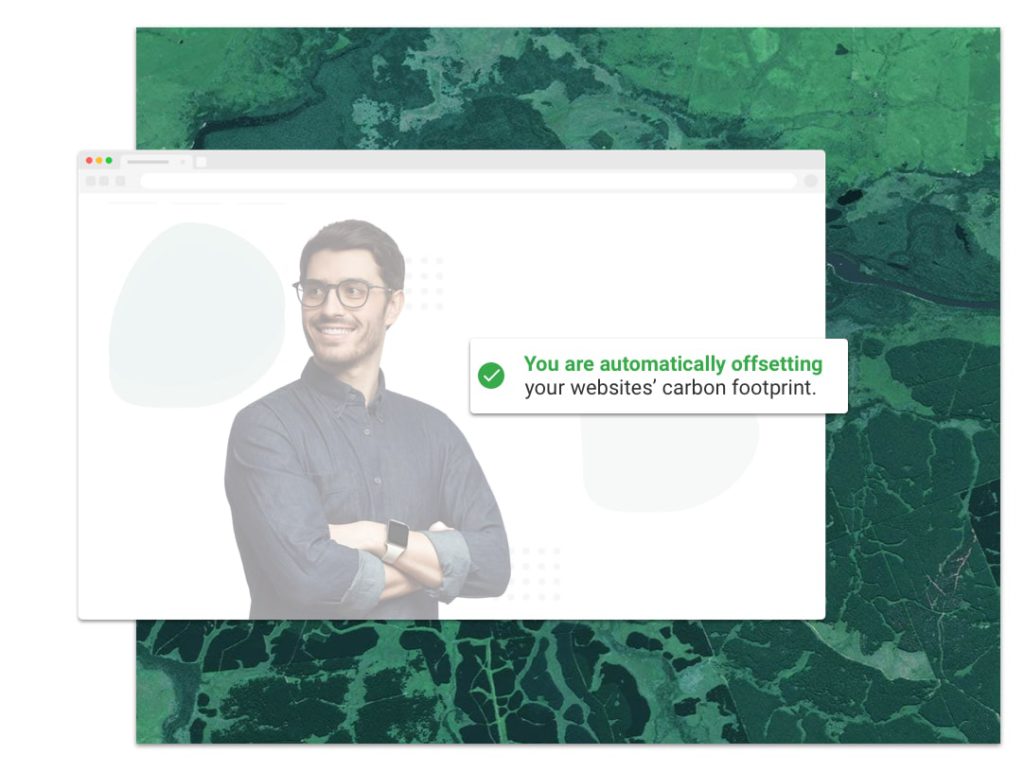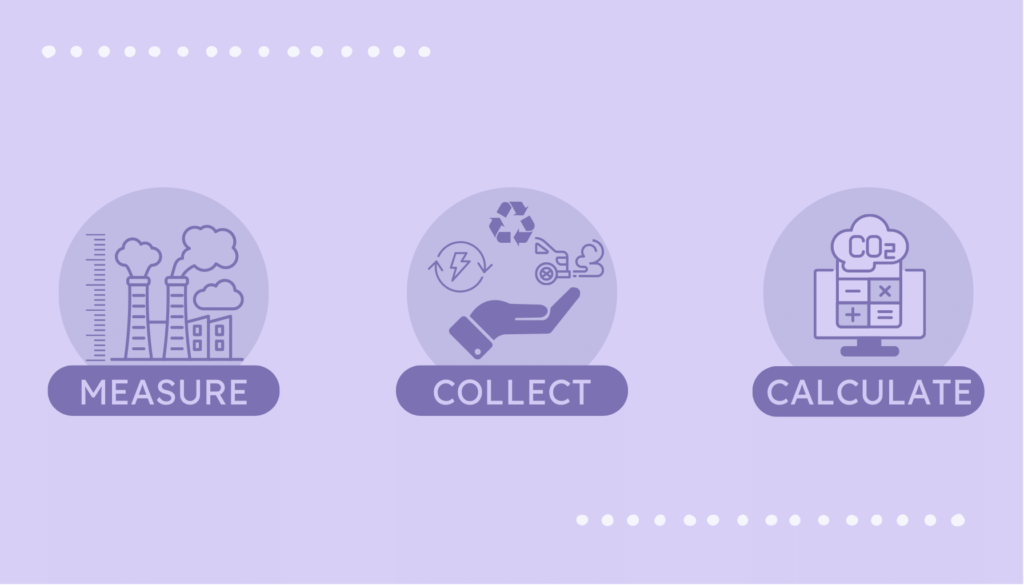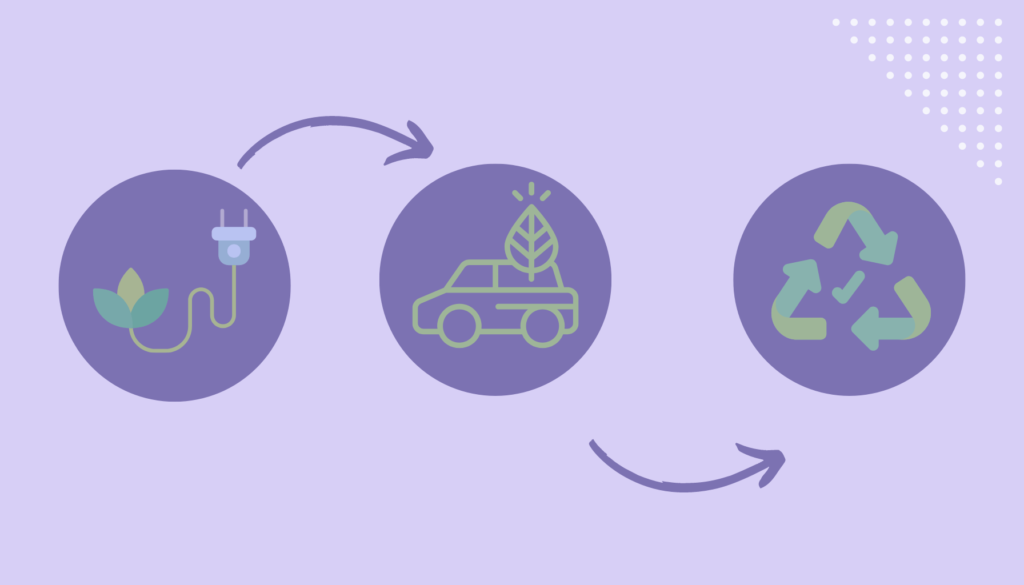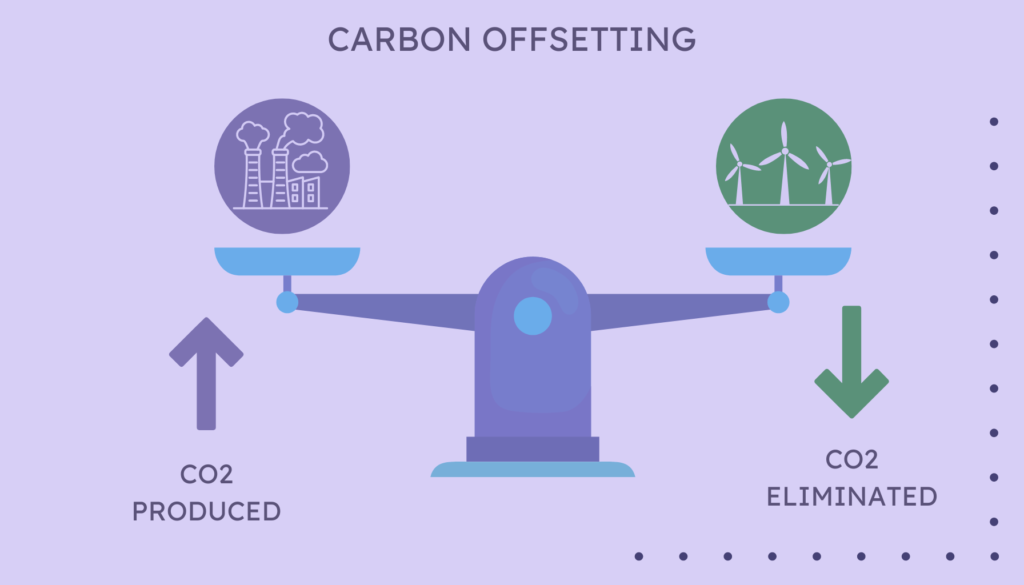
Climate change is one of the biggest challenges facing the world today. As a major contributor to global greenhouse gas emissions, businesses have a critical role to play in addressing this issue. It’s time to take action and reduce your digital footprint to finally become a carbon neutral business.
You can become a carbon neutral business by reducing carbon emissions to zero or offsetting them by investing in projects that reduce emissions elsewhere. Becoming a carbon neutral business is not only essential for the environment but can also bring benefits to the business, such as cost savings and improved reputation.
We will guide you through the process of offsetting your carbon footprint and explore the importance of employee and customer engagement in the process. We’ll dive into the tools available to measure, monitor, offset, and report progress.
By taking action to become a carbon neutral business, you will not only contribute to addressing the global challenge of climate change but also position yourself as a leader in sustainability while future-proofing your business.
Automatically Make Your Website Carbon Neutral
Pathmonk Climate automatically offsets your emissions through high-quality climate projects, while analyzing and calculating your website’s carbon footprint. Showcase your climate actions with your zero-emission website certificate.

Conduct a Carbon Audit to Determine Your Current Carbon Footprint
Assessing your carbon footprint is the first step towards becoming a carbon neutral business. Your carbon footprint refers to the total amount of greenhouse gas emissions produced by your business, including carbon dioxide, methane, and other greenhouse gases. In today’s digital world, it is also essential to consider your digital carbon footprint, which refers to the emissions generated by your online activities, such as email and data storage.
Measuring your carbon footprint is a critical step in understanding your impact on the environment and identifying opportunities to reduce your emissions. There are several steps you can take to measure your carbon footprint:
- Determine What To Measure: Your carbon footprint can be measured by identifying the emissions associated with your business activities, such as transportation, energy consumption, and waste management. Additionally, your digital carbon footprint includes emissions from your online activities, such as email, web hosting, and data storage.
- Collect Data: Once you have identified what to measure, you need to collect data on your business activities. This data can be collected through energy bills, travel records, and waste management records. There are also tools available that can help you collect data on your digital carbon footprint, such as website carbon calculators.
- Calculate Emissions: Once you have collected the necessary data, you can calculate your emissions. This involves converting your business activities into a standard unit of measurement, such as carbon dioxide equivalent (CO2e).

The Growing Danger of Your Digital Footprint
Digital activities are becoming an increasingly significant source of carbon emissions for businesses. As more businesses rely on digital technology to operate, the energy consumption required to power servers, data centers, and other digital infrastructure continues to grow. Here are some of the primary sources of emissions associated with digital activities:
- Data Centers: Data centers are facilities that house computer servers and other digital infrastructure. These facilities require vast amounts of energy to power and cool the servers. According to a report by the Natural Resources Defense Council, data centers in the US alone consume about 3% of the country’s total electricity, and this number is expected to double by 2030.
- Cloud Computing: Ahh the cloud; an imaginary space above our heads where our data is stored. Wrong. Cloud computing is a way of storing and accessing data and software applications over the internet. Cloud providers use massive data centers to host their services, and these data centers consume significant amounts of energy.
- Internet Infrastructure: The internet infrastructure required to transmit data, such as fiber-optic cables and network equipment, also requires energy to operate. As more people access the internet, the demand for energy to power this infrastructure continues to grow.
- End-User Devices: End-user devices, such as computers, smartphones, and tablets, also consume energy. The manufacturing and disposal of these devices also contribute to carbon emissions.
- Digital Media: The production, distribution, and consumption of digital media, such as streaming video and music, also generates carbon emissions. The energy required to power data centers that host this content, as well as the energy required for transmission and end-user devices, all contribute to the carbon footprint of digital media.
Automatically Make Your Website Carbon Neutral
Pathmonk Climate automatically offsets your emissions through high-quality climate projects, while analyzing and calculating your website’s carbon footprint. Showcase your climate actions with your zero-emission website certificate.

Set Achievable Reduction Targets
Setting reduction targets is a crucial step for anyone looking to work toward a carbon neutral business. Here are some key points to keep in mind when setting reduction targets:
- Reduction targets provide a clear direction for a company’s sustainability efforts
- They ensure that a company is making measurable progress toward carbon neutrality
- They help to prioritize sustainability initiatives
- They demonstrate a company’s commitment to sustainability to customers, employees, and investors
Once you have determined your company’s baseline emissions, it’s time to set your reduction goals. Here are some recommendations that you can follow in this step:
- Consider the Latest Scientific Recommendations: The latest scientific research recommends that we need to reduce global emissions by 45% by 2030 to avoid climate change’s worst impacts. Consider these recommendations when setting your reduction targets.
- Identify Areas for Improvement: Analyze your company’s operations to identify areas where emissions can be reduced.
- Prioritize Reduction Opportunities: Determine which areas offer the greatest potential for emissions reductions and prioritize these areas when setting reduction targets.
- Set SMART Targets: Ensure that your reduction targets are Specific, Measurable, Achievable, Relevant, and Time-bound. For example, a reduction target could be to reduce emissions from company vehicles by 30% by 2025.
- Involve Stakeholders: Involve employees, suppliers, customers, and other stakeholders in the reduction target-setting process to ensure that the targets are achievable and meaningful.

Implement Reduction Strategies
Reduction strategies can have significant benefits beyond becoming a carbon neutral business and reducing your carbon footprint. For example, energy efficiency measures can result in cost savings on utility bills, while waste reduction strategies can improve a company’s reputation and reduce landfill costs. Additionally, many consumers are increasingly interested in supporting businesses that prioritize sustainability, making carbon neutrality an important factor in attracting and retaining customers.
Reports suggest that companies that prioritize sustainability outperform their peers financially. A study by Harvard Business Review found that companies that prioritize sustainability saw an 18% increase in profitability compared to their peers.
Here are some practical reduction strategies that you can implement to reduce your company’s carbon footprint:
Reduction Strategies for Energy Consumption:
- Install energy-efficient lighting, such as LED bulbs, which use 75% less energy than traditional incandescent bulbs.
- Upgrade heating, ventilation, and air conditioning (HVAC) systems to energy-efficient models, which can reduce energy consumption by up to 30%.
- Use smart power strips to eliminate energy waste from electronics that are plugged in but not in use.
- Utilize natural light and ventilation to reduce reliance on artificial lighting and air conditioning.
- Encourage employees to power off electronics when not in use.
- Implement a green IT policy to reduce energy consumption from computers and other IT equipment.
Reduction Strategies for Transportation:
- Encourage employees to carpool, use public transportation, or bike to work.
- Consider offering incentives for employees who use low-carbon transportation options.
- Utilize electric or hybrid vehicles for company transportation needs.
- Reduce the need for travel through video conferencing and other remote work options.
- Optimize delivery routes to minimize transportation emissions.
- Use low-emission fuels, such as biodiesel, when possible.
Reduction Strategies for Waste:
- Implement a recycling program for paper, plastics, and other recyclable materials.
- Encourage the use of reusable water bottles, coffee cups, and other containers to reduce single-use plastics.
- Donate or recycle unused office equipment and furniture.
- Compost food waste from the company cafeteria or kitchen.
- Implement a “zero waste” policy to minimize waste generation.

Purchase Carbon Offsets From a Reputable Provider
Carbon offsets are a way for companies to take responsibility for their carbon footprint by supporting projects that reduce greenhouse gas emissions. When a company purchases a carbon offset, they are essentially funding a project that reduces emissions in another part of the world, such as renewable energy projects or forest conservation initiatives.
However, it is important to purchase carbon offsets from reputable providers to ensure that the projects being supported are legitimate and effective. The quality of carbon offsets can vary widely, and it is essential to do research to ensure that the provider is transparent and accountable.
Pathmonk Climate is one such provider that offers a simple and effective way for companies to offset their website emissions. Website emissions are generated by the energy used to power and host a website, and they contribute to a company’s overall carbon footprint. By becoming a member of Pathmonk Climate, a company can automatically compensate for the emissions associated with its website.
Pathmonk Climate offers several benefits to companies looking to offset their website emissions:
- Easy to use: Pathmonk Climate is easy to implement, requiring only a few simple steps to become a member and begin offsetting website emissions.
- Effective: Pathmonk Climate supports projects that are verified to reduce carbon emissions and provide other benefits, such as social and environmental co-benefits.
- Transparent: Pathmonk Climate provides a detailed report on the projects being supported, including the location and type of project, the number of emissions reduced, and the verification process used.
- Credible: Pathmonk Climate is certified by the Gold Standard, which is one of the most reputable carbon offset standards in the world.
By becoming a member of Pathmonk Climate, companies can take action to combat climate change and demonstrate their commitment to sustainability. In addition to offsetting website emissions, companies can display a special badge on their website to showcase their commitment to reducing their environmental impact. This badge can help to build trust with customers and stakeholders, who are increasingly looking to support businesses that prioritize sustainability.

Track and Report Progress Regularly
Regular tracking and reporting of carbon neutrality progress can have several benefits, including employee motivation, increased transparency and credibility, risk management, cost savings, competitive advantage, and improved stakeholder relationships.
When reporting on carbon neutrality progress, companies should report on the following main metrics:
- Total Greenhouse Gas Emissions: This includes Scope 1, 2, and 3 emissions and provides a comprehensive view of the company’s carbon footprint.
- Emissions Reduction Targets: Companies should report on the targets they have set for reducing emissions and their progress towards achieving these targets.
- Emissions Reductions Achieved: Companies should report on the actual emissions reductions achieved over a specific period, such as a year or a quarter.
- Carbon Offsets Purchased: Companies should report on the number of carbon offsets purchased and the projects supported by these offsets.
- Other Sustainability Metrics: Companies may also choose to report on other sustainability metrics, such as water usage, waste generation, and employee engagement.
Tools and Resources Available for Tracking and Reporting
There are several tools and resources available to help companies track and report their carbon neutrality progress. These include:
- Carbon Accounting Software: Carbon accounting software can help companies measure their carbon footprint, track emissions over time, and calculate emissions reductions. Examples of carbon accounting software include Carbon Footprint, Carbon Analytics, and Ecometrica.
- Sustainability Reporting Frameworks: Sustainability reporting frameworks, such as the Global Reporting Initiative (GRI) and the Carbon Disclosure Project (CDP), provide guidelines and standards for reporting on sustainability metrics.
- Certifications: Certifications, such as the Carbon Trust Standard and the Climate Registered Program, provide third-party verification of a company’s carbon neutrality status.
- Industry Associations: Industry associations, such as the World Business Council for Sustainable Development (WBCSD) and the Sustainable Apparel Coalition (SAC), provide resources and tools for tracking and reporting sustainability metrics specific to their industry.
Conclusion
Becoming a carbon neutral business is not only beneficial to the planet, but it can be beneficial to businesses as well.
To achieve this, companies need to set reduction targets, implement reduction strategies, purchase carbon offsets, and track and report progress regularly. By doing so, businesses can not only reduce their environmental impact but also enjoy benefits such as cost savings, a competitive advantage, and improved stakeholder relationships.
Ultimately, becoming carbon neutral requires a comprehensive and sustained effort, but the rewards are significant and can help build a more sustainable and resilient future for all.








